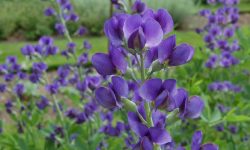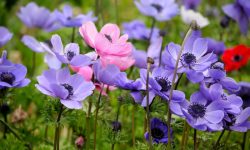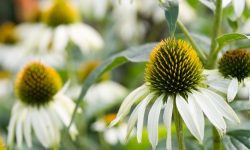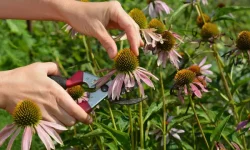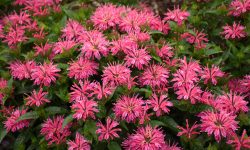Rhododendrons are beloved for their vibrant flowers and lush foliage. Knowing when they bloom helps gardeners plan for peak beauty and enjoy a colorful landscape. Proper timing and care ensure these shrubs produce abundant, long-lasting flowers each season.
Blooming periods vary depending on species, climate, and maintenance practices. By understanding factors that influence flowering, gardeners can encourage healthy growth, prevent common mistakes, and maximize the impact of rhododendrons in their garden. Expert advice ensures blooms appear at the perfect time.
Understanding Rhododendron Bloom Cycles
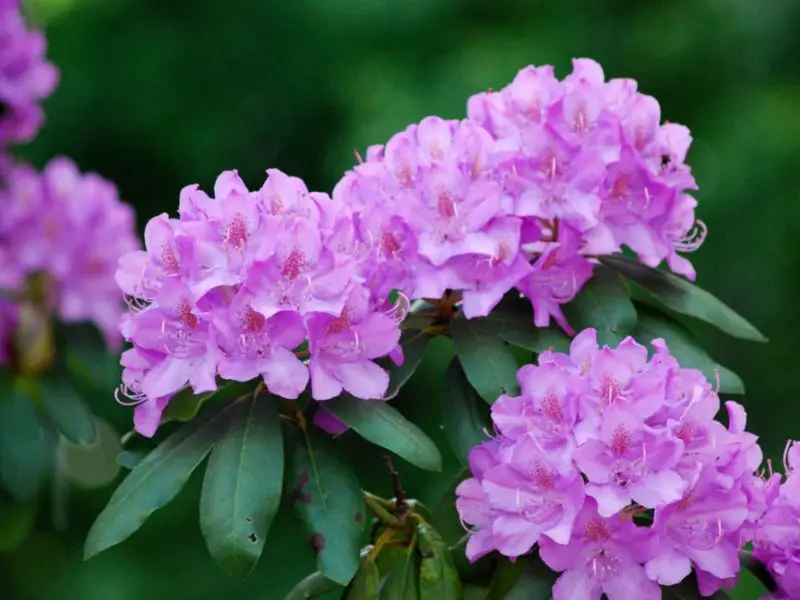
Early, Mid, and Late Blooming Varieties
Rhododendron species bloom at different times, offering opportunities for extended garden color. Early bloomers generally flower in March or April. These varieties are ideal for adding spring vibrancy to the landscape. They often include smaller species suitable for borders or containers.
Mid-season rhododendrons usually bloom in May. They provide the main display of color, bridging early and late bloomers. These shrubs are often larger and produce more abundant flowers. Combining mid-season varieties with early bloomers ensures a smooth transition of colors across the garden.
Late bloomers flower from June into July. These varieties extend flowering into summer and provide continuous visual interest. Selecting a combination of early, mid, and late bloomers ensures uninterrupted color. Observing local climate and temperature patterns helps predict when each variety will peak. This knowledge allows gardeners to plan plant placement for maximum effect and visual harmony.
Factors Influencing Bloom Timing
Sunlight, temperature, and soil conditions significantly affect rhododendron flowering. Adequate light promotes bud formation and strong flower development. Too much sun can scorch leaves, while deep shade delays blooms and reduces flower size.
Soil quality impacts root health and nutrient uptake. Acidic, well-drained soils encourage robust flowering. Poor drainage or nutrient deficiencies can stunt growth and limit bloom production. Incorporating organic matter improves soil texture and fertility, supporting healthy roots and consistent flowering.
Environmental stresses, including drought, extreme heat, or late frost, can damage buds and delay flowering. Consistent watering, mulching, and fertilization reduce stress and enhance bloom timing. Monitoring local conditions and adjusting care practices helps gardeners ensure rhododendrons flower predictably and abundantly, resulting in a vibrant, long-lasting display.
Preparing for Rhododendron Blooms
Choosing the Right Location
Selecting the correct site is crucial for rhododendron flowering. Partial shade with morning sun and afternoon protection works best. Too much direct sunlight can scorch leaves, while deep shade reduces blooms.
Soil quality also affects bloom performance. Acidic, well-drained soil encourages strong root development and abundant flowers. Amend clay-heavy soils with compost or peat moss to improve drainage and texture. Raised beds are helpful in wetter areas.
Proper placement ensures the plant receives adequate light, nutrients, and water. Observing the garden and selecting a microclimate that suits rhododendrons increases the chances of consistent, vibrant flowering.
Soil Preparation and Fertilization
Rhododendrons thrive in slightly acidic soil with a pH between 4.5 and 6.0. Test the soil before planting and adjust acidity if necessary. Incorporate organic matter such as compost or leaf mold to enrich nutrients and improve soil texture.
Fertilize in early spring using formulas designed for acid-loving plants. Slow-release fertilizers provide consistent nutrients, supporting bud development and vibrant blooms. Over-fertilizing can harm roots and reduce flowering potential.
Well-prepared soil promotes healthy roots, strong stems, and abundant flowers. Combining proper fertilization with soil amendments ensures predictable bloom timing and long-term plant health. Gardeners who prepare soil thoroughly maximize rhododendron flowering success.
Caring for Rhododendrons to Promote Flowering
Watering Practices
Rhododendrons need consistent moisture to support bud development. Deep watering once or twice a week is ideal during dry spells. Shallow watering encourages weak, surface roots.
Mulching around the base helps retain soil moisture and regulate temperature. Organic mulches such as pine bark, needles, or leaf mold are recommended. Mulching also suppresses weeds and improves soil structure as it decomposes.
Proper watering practices ensure root health and reduce stress. Consistent moisture promotes abundant, timely blooms, while improper watering can result in fewer flowers and weak growth. Monitoring soil regularly helps maintain optimal hydration for flowering success.
Pruning and Deadheading
Prune rhododendrons immediately after flowering. Removing spent blooms prevents seed formation and redirects energy to next season’s buds. Remove dead or damaged branches to maintain shape and improve airflow.
Avoid late summer or fall pruning, which can reduce cold hardiness. Deadheading flowers regularly encourages additional blooms and keeps plants tidy. Focus on weak or overcrowded branches to strengthen the overall structure.
Regular pruning and deadheading improve plant health, promote stronger stems, and encourage more abundant flowering. Timely maintenance ensures rhododendrons produce vibrant, high-quality blooms year after year.
Pest and Disease Management
Common pests include aphids, spider mites, and lace bugs. Inspect plants regularly for damage and apply insecticidal soap if infestations persist. Encourage natural predators like ladybugs to control pests.
Fungal diseases, such as root rot, leaf spot, and powdery mildew, are common. Proper drainage, mulching, and spacing reduce disease risk. Remove and dispose of infected leaves promptly to prevent spread.
Maintaining healthy plants through proper watering, pruning, and pest control ensures rhododendrons bloom reliably. Disease-free, well-cared-for shrubs produce vibrant flowers consistently and maintain attractive foliage.
Seasonal Care Tips
Spring
Spring is a critical period for rhododendrons. Fertilize with acid-loving plant fertilizer to support new growth and bud formation. Regular watering is essential, especially during dry spells.
Inspect plants for frost damage, pests, or disease. Remove dead leaves and debris to reduce infection risk. Mulch helps retain soil moisture and regulate temperature.
Consistent spring care sets the stage for abundant flowering. Proper attention during this period ensures healthy growth, vibrant blooms, and strong plant structure throughout the season.
Summer
During summer, maintain consistent moisture. Deep watering helps roots stay strong and encourages long-lasting blooms. Shade plants from harsh afternoon sun to prevent leaf scorch in hotter climates.
Monitor for pests and diseases regularly. Remove weeds and ensure mulch remains in place to conserve moisture. Light fertilization may be applied to support continued growth and flower development.
Summer care prolongs bloom duration and preserves plant health. Healthy rhododendrons are resilient to heat stress and continue producing vibrant flowers throughout the season.
Fall and Winter
In fall, prepare rhododendrons for colder months by adding extra mulch around roots. This protects shallow roots from frost and temperature fluctuations. Remove fallen leaves to prevent disease.
Reduce watering during winter dormancy, but monitor soil moisture. Avoid heavy pruning, which can damage winter buds and reduce flowering potential. Shelter plants from harsh winds or frost-prone areas when necessary.
Proper fall and winter care strengthens plants, ensures survival through cold periods, and supports abundant flowering the following spring. Seasonal preparation enhances long-term garden beauty and bloom reliability.
Monitoring Bud Development
Observing rhododendron buds is key to predicting flowering time. Bud size, firmness, and color provide important clues about readiness to bloom. Early detection allows gardeners to adjust care practices for optimal results.
Check buds regularly during late winter and early spring. Look for frost damage, discoloration, or shriveling, which can indicate stress. Protect vulnerable buds using frost cloth, mulch, or microclimate adjustments. Healthy buds are more likely to produce abundant, vibrant flowers at the right time.
Monitoring buds also guides watering, fertilization, and pruning schedules. If buds appear weak or underdeveloped, adjust care by improving soil moisture or providing additional nutrients. By tracking development closely, gardeners can ensure predictable flowering, avoid surprises, and enjoy a longer bloom display. Consistent observation enhances overall plant health and supports long-term gardening success.
Enhancing Flower Longevity
Flower longevity depends on proper care and stable environmental conditions. Adequate water, filtered sunlight, and balanced nutrients help flowers last longer. Consistent soil moisture prevents stress that can shorten bloom life.
Deadheading spent flowers prevents energy waste on seed formation. Removing faded blooms redirects nutrients toward healthy buds and new growth. Mulching around the base stabilizes soil temperature, conserves moisture, and reduces stress during hot or dry periods.
Avoid excessive pruning during flowering, as it can damage buds and reduce bloom duration. Regular monitoring for pests and disease ensures flowers remain vibrant. By combining careful watering, timely deadheading, mulch management, and pest control, rhododendrons produce longer-lasting, more abundant blooms. Extended flower life enhances garden beauty and maximizes enjoyment of each season’s display.
Tips for Extending Rhododendron Bloom
Selecting Complementary Varieties
Planting early, mid, and late-blooming rhododendrons together extends flowering across the season. Early bloomers bring spring color, mid-season provides peak display, and late bloomers continue the vibrancy into summer.
Choose varieties suited to local climate and light conditions. Selecting compatible types ensures plants thrive and bloom reliably. Mixing colors, heights, and flower shapes adds visual interest and variety.
Combining different bloom times creates a dynamic, continuous display. Gardeners can enjoy color for several months, rather than a short flowering period. Proper planning ensures a long-lasting, visually appealing garden.
Microclimate Adjustments
Rhododendrons benefit from microclimate modifications to encourage consistent blooms. Shelter plants from strong winds and frost. In hotter areas, provide filtered shade to prevent leaf scorch.
Adjust soil conditions and mulching based on sunlight, moisture, and temperature. Protect buds during late frost periods to prevent flower loss. Small structures or shade cloth can moderate extreme weather impacts.
Microclimate management improves bloom timing, flower longevity, and overall plant health. By tailoring conditions to plant needs, gardeners can ensure abundant, long-lasting rhododendron flowers in varied environments.
Encouraging Repeat Blooming
Deadhead spent flowers promptly to redirect energy toward new growth. Consistent watering, mulching, and fertilization support repeat flowering.
Monitor for nutrient deficiencies or pest damage. Promptly addressing problems encourages strong stems and healthy flower production. Healthy rhododendrons are more likely to bloom multiple times in a season.
Combining deadheading, proper care, and monitoring ensures maximum flowering potential. Repeat blooming enhances garden aesthetics and extends enjoyment of vibrant rhododendron flowers throughout the growing season.
Common Rhododendron Mistakes to Avoid
Overwatering
Overwatering is one of the most frequent mistakes gardeners make. Rhododendrons have shallow roots that need oxygen. Constant wet soil reduces root function and can cause root rot. Waterlogged soil also encourages fungal diseases that affect leaves and buds.
Deep watering once or twice per week is enough during dry periods. Mulching helps retain moisture while preventing overwatering. Check soil moisture regularly by inserting a finger into the soil. Only water when the top few inches feel dry.
Proper watering encourages strong root development and healthy blooms. Avoiding excess water ensures buds form properly and flowers remain vibrant. Consistent monitoring reduces stress and prevents damage from overhydration.
Poor Soil Conditions
Planting rhododendrons in poor or heavy soil hinders bloom potential. Acidic, well-drained soil is essential for strong root and bud development. Clay-heavy or alkaline soils can stunt growth and delay flowering.
Amend soil with compost, peat moss, or leaf mold to improve texture and acidity. Raised beds help improve drainage in wetter areas. Regularly testing soil pH ensures it remains between 4.5 and 6.0, optimal for rhododendrons.
Healthy soil promotes nutrient uptake, strong stems, and abundant flowers. Correcting soil issues early helps plants establish quickly and bloom reliably. Proper soil preparation is the foundation of successful flowering.
Improper Pruning
Pruning rhododendrons at the wrong time can reduce flowering. Cutting after buds form or too late in the season removes potential blooms. Prune immediately after flowering to shape the plant and remove weak branches.
Deadheading spent flowers prevents energy waste on seed production. Focus pruning on dead, damaged, or overcrowded branches to improve airflow and light penetration. Avoid heavy pruning during late summer or fall to preserve winter buds.
Timely and proper pruning strengthens the plant, encourages new growth, and maximizes flower production. Regular maintenance ensures abundant blooms and a healthy, well-structured shrub.
Companion Plants for Extended Garden Color
Choosing the right companion plants enhances rhododendron displays and overall garden aesthetics. Shade-loving perennials, such as ferns, hostas, and astilbes, complement rhododendron foliage. Their contrasting leaf shapes and textures add depth to the landscape. By selecting plants with similar light and moisture requirements, gardeners ensure healthy growth for all species.
Early- or late-blooming companions provide color when rhododendrons are not at peak flowering. Spring bulbs, like tulips or daffodils, fill early gaps, while summer perennials extend the season after rhododendrons fade. This layering of bloom times creates continuous visual interest, ensuring the garden remains vibrant for months. Mixing flower colors and heights adds dynamic appeal and enhances overall composition.
Companion planting also supports soil health and reduces maintenance. Plants with dense foliage or groundcover help suppress weeds and retain soil moisture. By carefully planning plant placement, gardeners highlight rhododendron blooms and create harmonious color schemes. Thoughtful selection of companions maximizes aesthetic impact, provides seasonal interest, and supports long-term plant health. This approach ensures that rhododendrons stand out while the surrounding plants maintain a balanced and attractive garden environment.
Indoor Care and Container Rhododendrons
Rhododendrons can thrive in containers or indoors with proper care. Large pots with good drainage prevent waterlogging and root rot. Use acidic, well-drained soil enriched with compost or peat moss to ensure healthy root development. Proper container selection allows roots to spread without restriction, supporting strong stems and abundant flowering.
Place container rhododendrons in bright, indirect sunlight. Direct sunlight can scorch leaves, while insufficient light delays bud formation. Maintain consistent soil moisture, watering deeply but allowing the top layer to dry slightly between watering. Light fertilization during the growing season provides nutrients necessary for bud development and vibrant flowers.
Regular monitoring for pests and diseases is essential. Check leaves and soil for aphids, spider mites, or fungal issues. Promptly remove affected areas and treat as needed. Container rhododendrons offer flexible placement and the ability to enjoy flowers closer to living spaces. Proper indoor care ensures healthy growth, strong stems, and long-lasting blooms, enhancing both indoor and outdoor aesthetics throughout the growing season.
FAQ About When Rhododendrons Bloom
What is the best time to plant rhododendrons?
Early spring or fall is ideal. Planting during cooler weather reduces transplant shock. Avoid peak summer heat and freezing winter conditions. Proper timing helps roots establish before flowering.
How much sunlight do rhododendrons need?
Rhododendrons thrive in partial shade. Morning sun with afternoon protection is optimal. Too much sun can scorch leaves; deep shade reduces flower production. Monitor local sunlight patterns for best results.
How often should I water rhododendrons?
Water deeply once or twice weekly, depending on rainfall. Keep soil consistently moist but never waterlogged. Mulching conserves moisture and stabilizes soil temperature. Adjust frequency during extreme heat or drought.
How can I encourage more blooms?
Deadhead spent flowers and prune immediately after blooming. Fertilize with acid-loving plant food. Adequate sunlight, proper soil, and consistent watering promote healthy bud formation. Avoid late-season pruning that may remove next year’s buds.
What soil conditions are optimal for rhododendrons?
Acidic, well-drained soil with pH 4.5–6.0 is best. Amend clay or alkaline soils with compost, peat moss, or leaf mold. Proper soil supports strong roots, nutrient uptake, and abundant flowering.
Conclusion
Rhododendron bloom timing depends on species, climate, and care. Early, mid, and late varieties create continuous garden color. Proper location, soil, watering, pruning, and pest management ensure abundant, vibrant flowers. Seasonal preparation, including mulch and protection from frost, preserves buds and strengthens plants. By understanding bloom cycles and applying expert care, gardeners can enjoy perfectly timed rhododendron flowers year after year. Observing plant needs and following best practices maximizes bloom potential and enhances long-term garden beauty.

